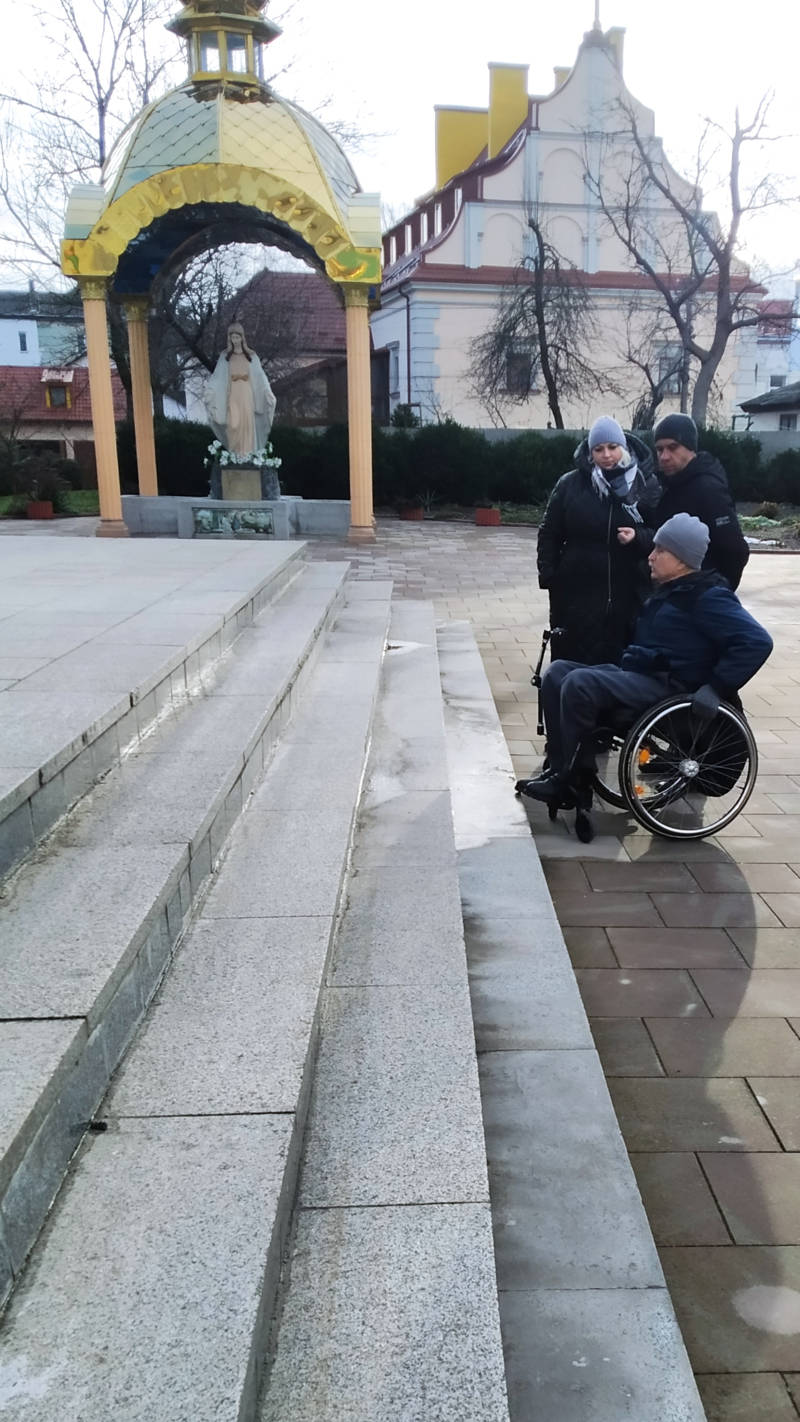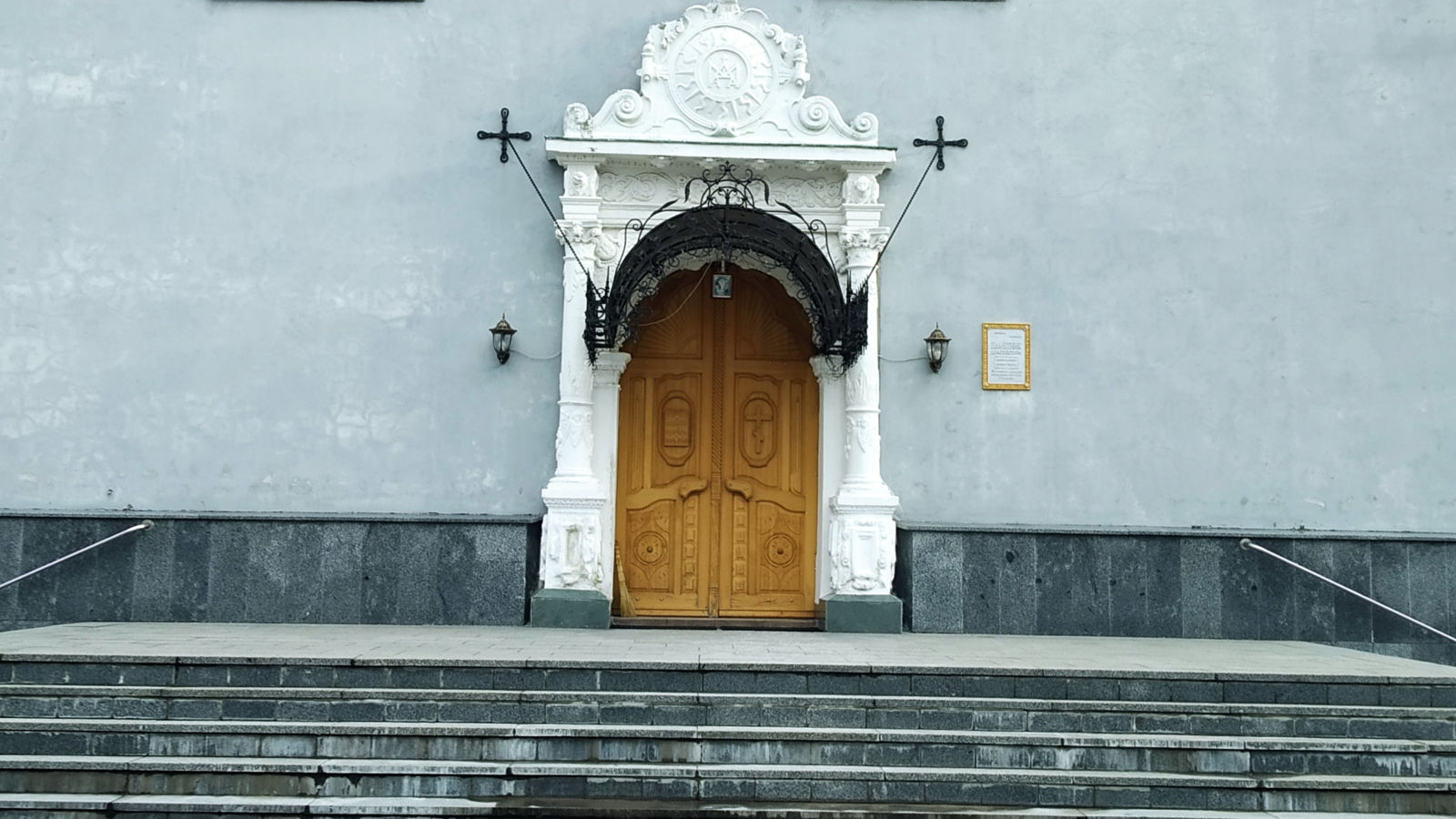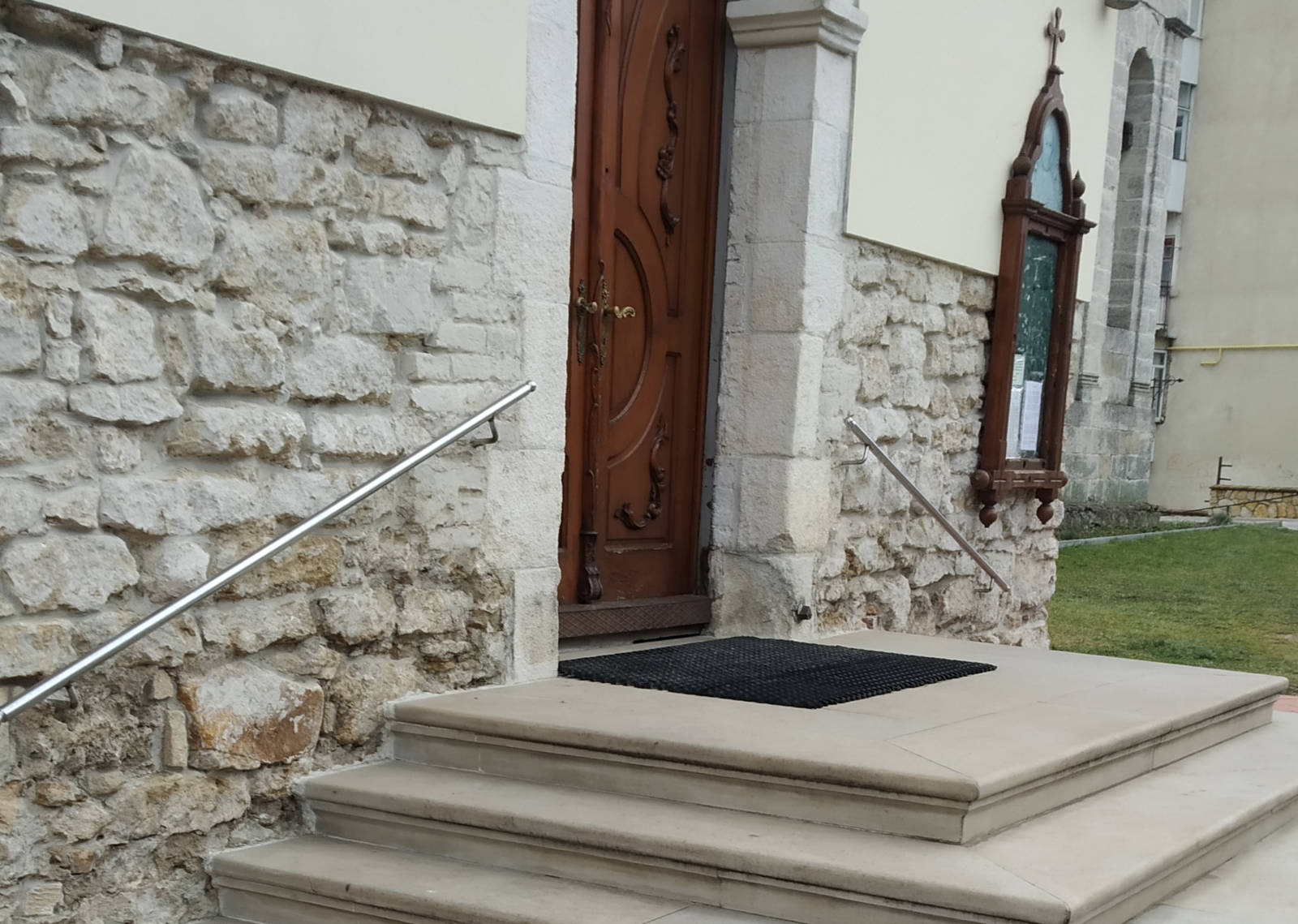The object of historical and cultural heritage is not accessible to Persons with Reduced Mobility (PRM).
Unfortunately, due to the existing stairs at the entrance, the church is not accessible for people in wheelchairs. Getting to it and to Persons with Reduced Mobility is also challenging. People with visual impairments can take a descriptive tour of the church's interior, and there are no tactile exhibits. For people with hearing impairment, conducting an excursion accompanied by sign language is possible. There are no designated and marked parking spaces for persons with disabilities following the Civil Code and Road Traffic Regulations.
Description

The former church, now the Church of the Resurrection, owes its appearance in 1624-27 to a Polish nobleman, the father of the king, Jakub Sobieski, who initiated the construction of a new castle in Zolochiv. Jakub Sobieski had a sentiment for this church – his first wife, Mariana Wyshnivecki, and his two daughters were buried here in the crypts.
Church documents preserved interesting information that in case of danger from the enemy, church silver was stored in barrels and buried. It was a rich temple, which was generously donated by the owners of Zolochev - the Sobesky family. Old stucco images of saints have been preserved in the dome. In 1691 the church, the bell tower, and the farm buildings were destroyed by a great fire in the city. The temple and bell tower were restored after the fire. The new bell for the temple was made with the donation of King Jan III Sobieski.
The bell bears the royal coat of arms and two medals with portraits of John III and his wife Maria Casimir with Latin inscriptions and contours of angels above them.
Thus, there were two Roman Catholic churches in Zolochiv - the Resurrection of the Lord (a parish church) and the monastic church - the Assumption of the Blessed Virgin Mary. The Austrian authorities abolished the PR monastery and handed the church over to the city's Roman Catholic community instead handing over the Church of the Resurrection to the Greek Catholics. During Soviet rule, when the UGCC was officially abolished and persecuted, the church was handed over to the Orthodox. It remained so until today.
Once upon a time, an Armenian community lived in Zolochiv, which was invited to Zolochiv by Jan III Sobesky and exempted from paying taxes for 20 years. Armenians were famous merchants and craftsmen, and their activities brought good money to the treasury. Armenians had their church, but in 1800 the parish was closed, and unfortunately, the church building disappeared without a trace from the city's surface.
From the end of the 19th century, half of the city's population consisted of Jews, who played a significant role in the pre-war history of Zolochiv. Jews appeared in Zolochiv at the end of the 16th century. The Jewish community had a synagogue, cemetery, ritual baths, barbershops, and shops. The hospital and the doctors were exempted from paying taxes by the city. The community had a wide right to trade, and the duty was to defend the city during the war. During the time of the Sobesky princes, Jews founded glass factories in the forests near Zolochiv. They were very famous families of Jewish industrialists worked, whose activities brought good incomes and enriched the city. Since 1782, a stone synagogue has been operating in Zolochiv, which was destroyed during World War II.
Zolochiv is the birthplace of the Jewish poet Imber Naftali Hertz. In 1878, the first Jewish settlement was established in Palestine. For this event, the twenty-two-year-old poet wrote a poem - "Our Hope", which in the future became the text of the anthem of the state of Israel.
Roald Hoffmann, the Nobel Prize in Chemistry winner, was born in Zolochiv. During the Nazi occupation, they and their mother were hidden by a Ukrainian family.
During the Holocaust, almost the entire Jewish community of the city was destroyed, and thus the age-old history of these people in Zolochiv ended forever.
Address, contacts St. M. Shashkevycha, 9, Zolochiv


